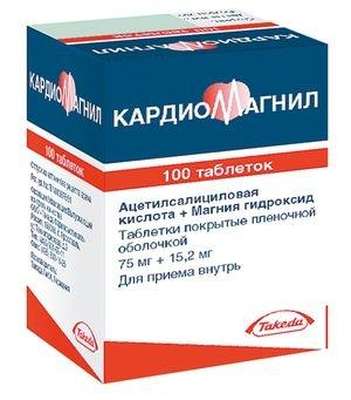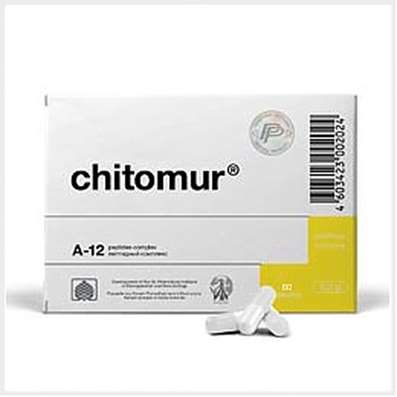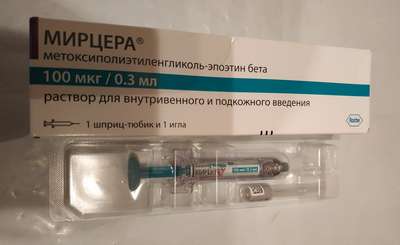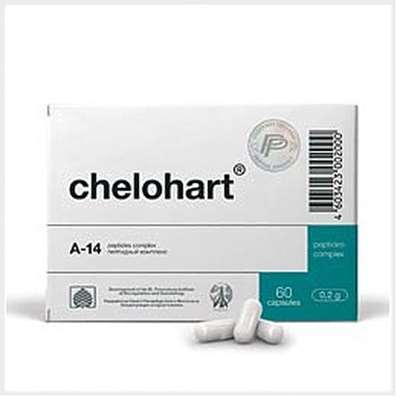Instruction for use: Alprostan
I want this, give me price
Dosage Form:concentrate for solution for infusion
Active substance:
Alprostadil * (Alprostadilum)
ATX
C01EA01 Alprostadil
Pharmacotherapeutic group:
Antiplatelet agents
Prostaglandins, thromboxanes, leukotrienes and their antagonists
Angioprotectors and proofreaders microcirculation
The nosological classification (ICD-10)
I73.0 Raynaud's Syndrome: Raynaud's syndrome Leriche; Raynaud's disease; Raynaud's phenomenon; RaynaudLeriche syndrome; Raynaud's disease; Raynaud's syndrome with trophic disorders; Peripheral angiopathy
I73.1 thromboangiitis obliterans [Buerger's disease]: Berger's disease; thromboangiitis obliterans; trombangiit; thromboangiitis obliterans; Buerger's disease
I73.9 Peripheral vascular disease, unspecified: angiospasm; Vasospasm / vasoconstriction; vasospastic disorders; Violation of venous microcirculation; Violation of circulation; Violation of peripheral blood circulation; Lack of peripheral blood circulation in the lower and upper limbs; Peripheral arterial occlusive disease; Peripheral arterial occlusive disease in stages III-IV on Fontaine; Peripheral vascular insufficiency; Peripheral vascular lesions; Peripheral vascular disorders; Peripheral circulatory disorder; spasm of artery; angiospasm; Functional peripheral arterial disease; Chronic occlusive disease; Chronic obliterating diseases of the lower limbs; Chronic arterial occlusive disease
I77.1 arteriostenosis: Occlusive arterial disease; Peripheral arterial occlusive disease;Peripheral arterial occlusive disease in stages III-IV on Fontaine
I79 lesions of arteries, arterioles and capillaries in diseases classified elsewhere: Lack of capillary circulation
I99 Other and unspecified disorders of the circulatory system: angiopathy; Arterial angiopathy; Atherosclerotic angiopathy; Hemodynamic right heart defects; Hemodynamic defect of the right heart; coronary angiopathy; Infringement of blood circulation; Violation of circulation; Violation microcirculation in organs and tissues; Peripheral circulatory disorders; Disorders of the peripheral circulation in the extremities; circulatory failure; Hemodynamic instability occlusion of arteriovenous origin; Acute circulatory failure; Psevdostenokardicheskie state; Psevdostenokardicheskoe disorder; circulatory disorder; Cardiovascular diseases; Vascular insufficiency; Thrombosis arteriovenous shunt; Thrombosis with prosthetic heart valves; Deterioration of blood circulation in the pelvic organs; Functional failure of the cardiovascular system; Functional disorders of the cardiovascular system; Chronic arterial insufficiency; Chronic heart failure; Age-related vascular disease; The risk of thrombosis
M34 Systemic sclerosis: scleroderma; scleroderma is a generalized; diffuse scleroderma; scleroderma universal; Progressive systemic sclerosis; Buschke's disease; scleredema; Sclerema aponeurotic benign
M35.9 Systemic affection of connective tissue, unspecified: Hyperplasia of connective tissue; Diffuse connective tissue disease; collagen disease; Collagen diseases; collagenase; Systemic diseases of connective tissue; Diffuse connective tissue disease
Q21.3 Fallot's tetralogy: A defect type ostium primum; Associated congenital cyanotic heart; defectstetralogy of Fallot
Q22.4 Congenital stenosis of the tricuspid valve: Atresia of the tricuspid valveĉ Tricuspid Valve Stenosis
Q23.0 Congenital aortic stenosis of valve: aortic atresia; Congenital aortic stenosis
Q23.2 Congenital mitral stenosis: mitral atresia; Mitral atresia; Mitral heart defects; Malformations of the mitral valve
Structure and Composition
1 vial with 0.2 ml concentrate for infusion (in absolute ethanol) containing 0.1 mg of alprostadil; 10 vials per box.
Pharmacology
Mode of action - vasodilator, antiagregatine, angioproteguoe.
Pharmacodynamics
It improves the microcirculation and peripheral circulation, dilates the arteries, arterioles and sphincter relaxes precapillaries; It improves the rheological properties of blood, increases the plasticity of erythrocytes; It affects hemocoagulation reducing platelet adhesion and aggregation. It has a fibrinolytic effect. It has anti-atherogenic effect, slowing the activation of neutrophils, excessive proliferation of vascular wall cells. Enhances collateral flow. The systemic and pulmonary vasodilatory effect of circulation. It helps increase blood flow to the cavernous bodies.
It reduces peripheral vascular resistance, blood pressure, reflex increases in heart rate, which leads to an increase in cardiac output. It stimulates the smooth muscles of the intestine, bladder and uterus; inhibits gastric acid secretion.
Pharmacokinetics
It is metabolized in the lungs to 60-90% (a single administration) by enzymatic oxidation with the formation of the three biologically active metabolites of 15-keto-PGE1, 15-keto-13,14-dihydro-PGE1, and 13,14-dihydro-PGE1 (PGE0 ). Ketometabolity have lower compared to alprostadil biological effect, metabolite, 13,14-dihydro-PGE1 (PGE0) has comparable with PGE1 action, but the duration. T1 / 2 is 10 to PGE1 and PGE0 - min 1 (alpha-phase) and 30 minutes (beta-phase). The main metabolites are excreted in the urine - 88% and feces - 12%.
Indications
Chronic obliterating diseases of arteries of the extremities stage III-IV (according to Fontaine classification), accompanied by pain at rest or trophic changes: occlusive disease with severe intermittent claudication (if not indicated surgery), atherosclerosis of arteries; diabetic angiopathy, Buerger's disease, Raynaud's syndrome with trophic disorders; vasculitis in systemic sclerosis; peripheral circulatory disorders due to exposure superlimiting vibration. Duktuszavisimye Congenital heart defects in newborns (to temporarily maintain the functioning of the ductus arteriosus before the reconstructive cardiac surgery).
Contraindications
Hypersensitivity, acute and subacute myocardial infarction, severe angina pectoris (including unstable), heart failure decompensation, arrhythmia, bronchial obstruction with severe signs of respiratory distress, swelling, or infiltrative lung changes, expressed human liver, a condition characterized by the risk of bleeding (gastric and duodenal ulcers, severe brain vascular proliferative retinopathy with a tendency to bleeding, extensive trauma); co-administration of vasodilators and anti-coagulant agents, pregnancy, breast-feeding; age 18 years (except for the neonatal period) and older than 75 years. In neonatology: inhibition of respiratory function, respiratory distress syndrome, a condition of spontaneous staunchly-patent ductus arteriosus.
Pregnancy and breast-feeding
Contraindicated. At the time of treatment should stop breastfeeding.
Side effects
From the nervous system and sensory organs: headache, dizziness, fatigue, somnolence, hypertonia of the neck muscles, increased irritability.
Cardio-vascular system and blood (blood, hemostasis): hypotension, tachycardia, angina, the AV block, leukocytosis, leukopenia, anemia, thrombocytopenia, bleeding, hypercapnia.
From the respiratory system: bradypnea or tachypnea.
From the digestive tract: a sense of discomfort in the epigastric region, nausea, vomiting, diarrhea, transient elevation of liver transaminases.
Other: malaise, increased sweating; possible swelling of the limbs, which is held in the vein infusion; hyperthermia, hypothermia, allergic reactions; reversible hyperostosis of long bones (for long - more than 4 weeks - treatment); increase in titer C-reactive protein, increase the level of potassium in the blood, hyperbilirubinemia, hematuria; shock, decreased renal function, anuria, hypoglycemia, tachyphylaxis.
When the side effects of the drug dose should be reduced.
Interaction
It enhances the effect of anticoagulants, antihypertensive agents, antiplatelet agents, and vasodilators.
Pharmaceutically compatible with other solutions (except saline, or 5% glucose solution 10).
Dosage and Administration
In chronic obliterating diseases of arteries of the lower extremities in adults: in / in, drip, at least 2 hours, 50-200 mcg (in 100-500 ml of normal saline or 5% glucose solution) 1 every day for more severe conditions - 50-100 mg 2 times a day. Recommended dilution: 1 drug vial (0.2 ml) diluted in 9.8 ml 5% glucose solution to give a concentration of 10 micrograms per 100 ml of solution; the resulting solution was diluted in 100-500 ml infusion solution (isotonic sodium chloride or 5% glucose solution). The course of treatment - 14 days, with good treatment effect continued for 7-14 days, the general course - no more than 4 weeks. If no effect within the first 2 weeks, treatment should be discontinued. When duktuszavisimyh congenital heart defects in newborns: in / in (via a large vein or via the umbilical artery directly into the mouth of the ductus arteriosus), drip. The initial rate of introduction - 0,01-0,05 g / kg / min. When the therapeutic effect dose reduced to the minimum maintenance - 0.01-0.02 g / kg / min. If necessary, the dose may be increased to 0.1 ug / kg / min.
Overdose
Symptoms: reduced blood pressure, redness of the skin, weakness.
Treatment: cessation of infusion; the oppression of the respiratory center in the newborn need to mechanical ventilation.
Precautionary measures
The I.V. the introduction may develop phlebitis (proximal to the injection site). This is usually not a reason for discontinuing treatment: inflammatory symptoms disappear a few hours after cessation of infusion or injection site change, a specific treatment in such cases is not required. Central venous catheterization can reduce the frequency of symptoms of this side effect. The number of adverse reactions is increased depending on the concentration and the rate of infusion. Increasing the infusion volume should be limited to patients with severe heart failure (risk of pulmonary edema and heart failure). Caution must be exercised in patients with hypertension; in elderly patients with insulin-dependent diabetes mellitus (especially when extensive vascular lesions), the appointment of a newborn in the case bradypnea, hypotension, tachycardia and hyperthermia.
When treatment is necessary to monitor hemodynamic parameters, acid-base balance, biochemical parameters and parameters of blood coagulation. A prerequisite use in newborns is the presence of the possibility of mechanical ventilation. The drug should be used under close medical supervision.
Patients with ischemic heart disease, renal failure (serum creatinine greater than 1.5 mg / L) should be monitored in the hospital during treatment and for 1 day after stopping treatment. To avoid the onset of symptoms of fluid overload of fluid administration should not exceed 50-100 ml per day. It should be a dynamic monitoring of the patient (control of blood pressure, heart rate), if necessary - control of body weight, fluid balance, measurement of central venous pressure, or echocardiography.
In patients on hemodialysis treatment with the drug should be performed in postdializnom period.
In patients with chronic lower limb arteries obliterating diseases of the use of the drug is part of a comprehensive treatment and clinical effect may occur after treatment.
Special instructions
The solution is recommended to use ex tempore. The prepared solution can be stored up to 24 hours at a temperature of 2-8 ° C.
Storage conditions of Alprostan
In a dry, dark place at a temperature of 1-5 ° C (do not freeze). The mixed solution - not more than 24 hours.
Keep out of the reach of children.
Shelf life of Alprostan
2 years.
Do not use beyond the expiration date printed on the package.

 Cart
Cart





